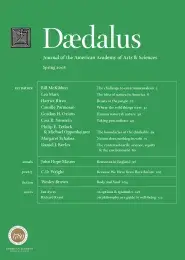Where the wild things were
Georges Fabre was a forester in late-nineteenth-century France. In the region known as the Cévennes, villages were doing well: the silk and chestnut industries were booming, and shepherds banded together to make the yearly ‘transhumance,’ bringing thousands of sheep up to the rich pastures of Mont Aigoual in springtime. Life was good– too good.
Clearing of the land for pasture and crops had been going on for at least five thousand years, but population booms in the late 1700s greatly overtaxed the land. Clearing and cutting trees for pastureland and firewood had denuded the old forested lands. Whole mountainsides were barren. By 1856, the normal heavy rains of this region caused abnormal floodwaters. When rains came, the now loose soil became mudslides pouring down into the valleys and towns below. Once bountiful fresh springs and clear streams became silted and undrinkable.
“On the 4th of October, 1861,” wrote Fabre in his diary, “clouds from the southeast, which had amassed for three days on the high summits of the Aigoual, burst suddenly and poured into the valley such quantities of water and stones that all the roads were cut off and the lands silted up . . . . On [the] 28th of October 1868, the disaster reoccurred . . . local people were astonished. Flood water from the Herault [river] had never before been so sudden nor so strong; it reached second stories.”
In 1875, the French National Forestry Commission gave Fabre a monumental task: to repair the environmental problems in the Cévennes. Over the next thirty years, Fabre, with the help of botanist Charles Flahaut, restored some 3,500 hectares, reaching 11,800 hectares by the time the Parc de Cévennes was created. To recover a working watershed, these two unintentional environmentalists argued the need to restore the land as it was before the clear-cutting. This was not an easy task: they had to win over angry locals, who feared the loss of pastureland for their sheep. They poured over diaries and interviewed the elderly–the ones who had been there Before. They figured out which hillsides had been beech woods; which live oak, cherry, and chestnut; which swathed in pines and firs. Flahaut started an arboretum–to experiment with trees from around the world–finding which species would do well in this harsh environment, with its poor soils.
. . .
